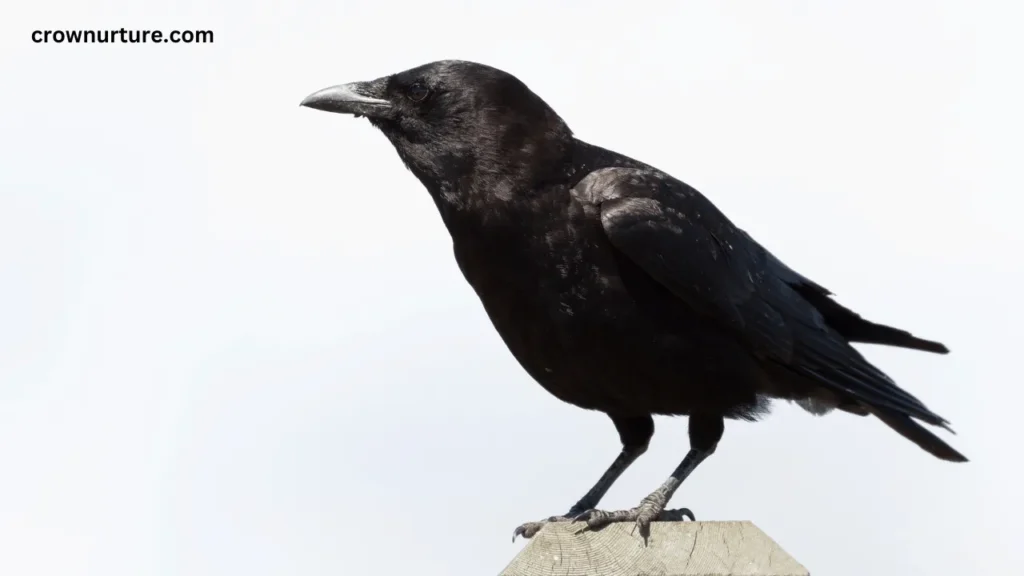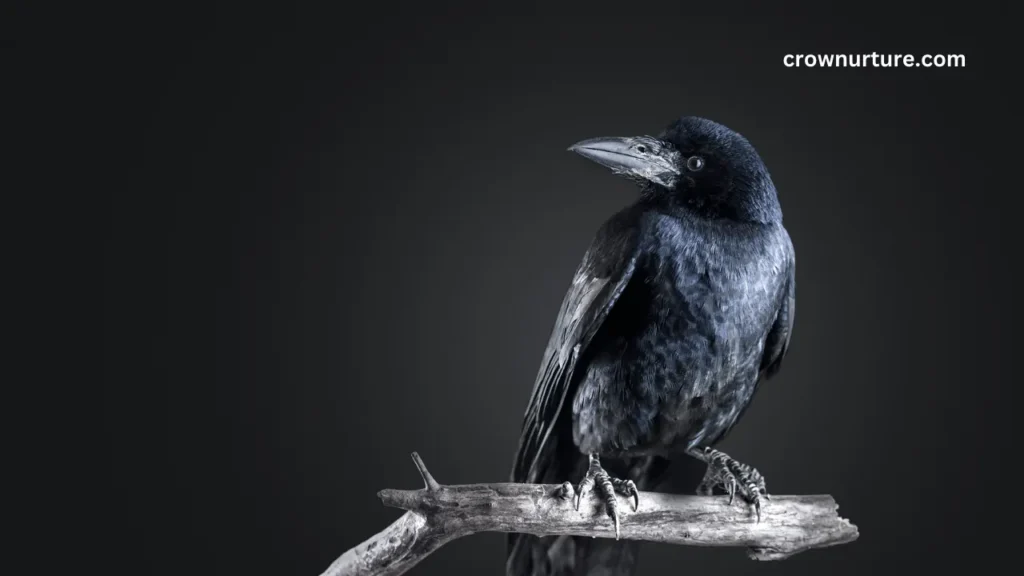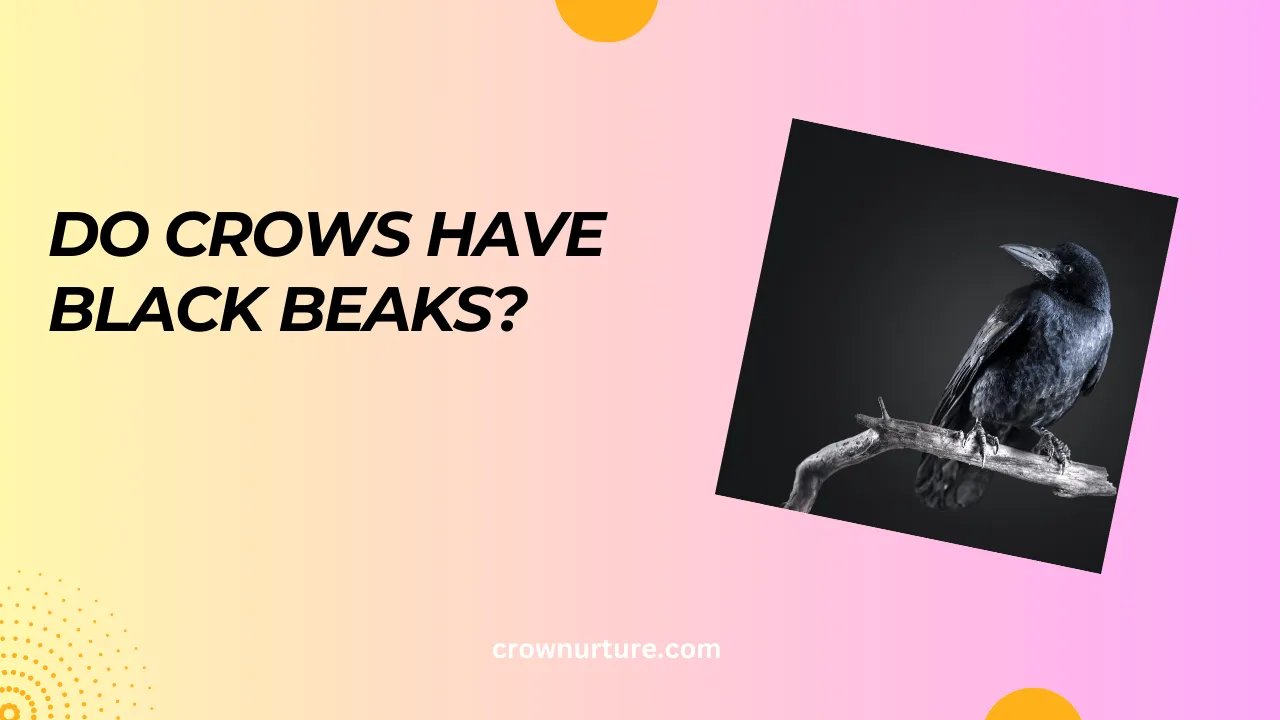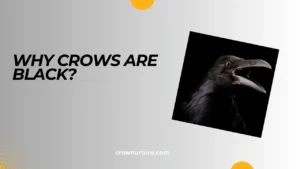Crows are some of the most intelligent and resourceful birds in the animal kingdom, but their appearance is just as fascinating. One of their standout features is their distinctive black beaks, which seem to blend seamlessly with their glossy dark plumage.
But have you ever wondered why their beaks are black or if there are any exceptions to this rule? The black beak of a crow is more than just an aesthetic detail—it’s an evolutionary trait that serves practical purposes and reflects their adaptability.
These beaks are not only essential tools for their survival but also a key to their versatility in feeding, hunting, and communication. In this blog, we’ll explore the unique physical traits of crows, the role of their beaks, and whether all crows share this feature.
We’ll also address common misconceptions and dive into the fascinating diversity within the Corvidae family to paint a full picture of why the black beak is an integral part of a crow’s identity.

Contents
Physical Characteristics of Crows
Crows are known for their sleek black feathers, which are often described as iridescent under sunlight, displaying subtle hints of blue or green. Their plumage, paired with their black beaks, gives them a uniform, iconic appearance that makes them easy to identify.
Their beaks are strong and slightly curved, designed for a variety of tasks like tearing food, cracking nuts, and manipulating objects. This versatility allows them to thrive in diverse environments, from urban areas to forests.
The black coloration of their beaks is not just about blending in—it’s a feature that aligns with their predatory and scavenging behavior, making them less conspicuous to both prey and competitors.
The Function of the Crow’s Beak
A crow’s beak is a multi-purpose tool that plays a critical role in its survival. Its main functions include:
- Foraging for Food: Crows use their beaks to dig through soil, tear apart carrion, and pick fruits or seeds from plants. Their beaks are strong enough to crack nuts and shells, showcasing their ability to access diverse food sources.
- Tool Use: Crows are one of the few bird species known for their tool-using abilities. They use their beaks to shape sticks or other objects to extract food from hard-to-reach places, demonstrating their remarkable intelligence.
- Communication and Grooming: Beaks also serve a social function. Crows use them for preening themselves and their flock members, strengthening social bonds within their group.
- Defense: The beak doubles as a weapon when defending territory or food, showcasing its adaptability.

Beak Color Variations in Corvids
While crows have black beaks, other members of the Corvidae family display more variation in beak color:
- Ravens also have black beaks, but they are typically larger and more curved than those of crows.
- Magpies exhibit a range of colors. For example, the yellow-billed magpie has a bright yellow beak, and the red-billed blue magpie has a red one.
- Jays often have lighter or differently colored beaks, depending on the species.
This variation reflects the diversity within the family and how different species adapt to their specific environments and diets.
Common Misconceptions About Crow Beaks
- “Crows with Yellow Beaks”
A common misconception, often fueled by cartoons and media, is that crows can have yellow beaks. In reality, no true crow species possesses a yellow beak. - Confusion with Other Birds
Some people mistake yellow-billed magpies or blackbirds for crows due to similarities in their plumage. However, these species are distinct and can be identified through careful observation of size, behavior, and habitat. - Juvenile or Sick Birds
Rarely, juvenile crows or birds with health conditions may exhibit lighter-colored beaks, but these instances are exceptions and not the norm.
Why Black Beaks Matter
The black beak of a crow is more than just a characteristic—it serves critical functions tied to survival and ecology:
- Camouflage: The black color helps them blend into their environment, particularly when foraging in dim light or shadows.
- Durability: The dark pigmentation may provide structural strength, helping their beaks withstand constant wear and tear.
- Thermal Regulation: In colder climates, the black beak absorbs heat, aiding in temperature regulation.
These traits make the black beak an essential adaptation for crows, contributing to their reputation as one of the most adaptable bird species.
Conclusion
Crows are remarkable birds, and their black beaks are a defining feature that underscores their adaptability and intelligence. These beaks are not just tools for feeding but symbols of their role as survivors in diverse environments.
The black coloration is uniform across true crow species, highlighting their evolutionary path and their unique place within the Corvidae family. While other members of this family exhibit colorful variations, the black beak remains a hallmark of the crow.
Understanding these traits deepens our appreciation for these birds and their contributions to the ecosystem. The next time you see a crow, take a moment to observe its features—its black beak is a testament to its survival and ingenuity.
FAQs
1. Do all crows have black beaks?
Yes, all true crow species have black or very dark gray beaks, making it a key identifying trait.
2. Why do crows have black beaks?
The black beak helps with camouflage, durability, and thermal regulation, all of which support the crow’s survival.
3. Are there any crows with yellow beaks?
No, yellow beaks are not found in any true crow species. Birds like yellow-billed magpies are often mistaken for crows.
4. What is the purpose of a crow’s beak?
Crows use their beaks for foraging, tool use, communication, grooming, and defense.
5. Do other Corvidae family members have black beaks?
Many corvids, like ravens, share the black beak trait, but others, like magpies, have colorful variations.
6. Can a crow’s beak change color?
Rarely, juvenile or sick crows may have lighter beaks, but this is temporary and not a typical feature of adult crows.








